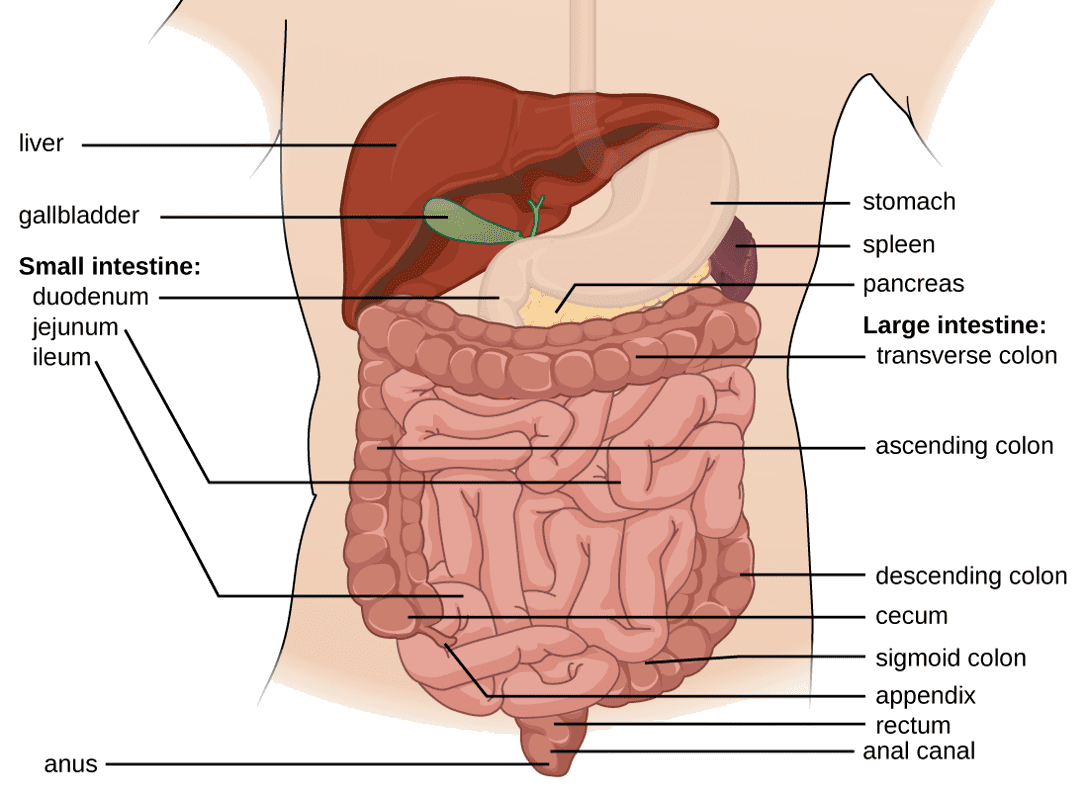Introduction
The human digestive system performs the function of digestion of food which is required for providing nutrition to the body. Food eaten undergoes a series of processes that break down complex food materials into simpler ones that ultimately provide energy. Absorption is one such process under digestion wherein the simpler nutrient molecules from the gastrointestinal tract are absorbed and transported to the blood or lymph to provide nutrition to the rest of the body parts.
Absorption in Various Parts of the Digestive System
The oral cavity, oesophagus, stomach, small intestine, and large intestine make up the alimentary canal, sometimes known as the gastrointestinal (GI) tract. The small intestine is where nutrients are mostly absorbed. However, some compounds are also absorbed in the large intestine, stomach, and oral cavity.
- Oral cavity absorption: The oral cavity plays a major role in chewing and combining food and saliva. The oral cavity is where some medicines, alcohol, and simple carbohydrates are absorbed.
- Absorption in Stomach: The stomach is a hollow, muscular organ that aids in a nutrient breakdown in the presence of hydrochloric acid and enzymes. The stomach is where certain vitamins, alcohol, lipid-soluble substances, non-steroidal anti-inflammatory medications (NSAIDs), caffeine, and water (during dehydration) are absorbed.
Absorption in the small intestine: The small intestine, is the longest section of the alimentary canal and measures around 6 meters in length. It has been designed to perform the function of absorption because it shows the presence of-
- Villi and microvilli
- Specialized absorptive cells
- A vast network of blood capillaries and lymphatic arteries.
Want to get an “A” on your Science exams? Let our expert teachers be your guide towards improving your grades and reaching your highest potential. Watch the related video of this chapter in Class 7th Science video lesson no 2.
According to their characteristics and functions, the small intestine is divided into three divisions. Which are:
- Duodenum-It is the first portion of the small intestine which receives chyme, liver secretions, and pancreatic secretions. Rather than absorbing nutrients, this area mostly performs food digestion.
- Jejunum-It is the middle coil portion of the small intestine and contains a lot of blood vessels. It acts as the initial site of nutrition absorption.
- Leum-It is the final and longest segment of the small intestine. This region of the small intestine absorbs the majority of the nutrients.
- Absorption in the Large intestine- large intestine is wider than the small intestine. It majorly absorbs water, Vitamin K, B12, various ions, and some nutrients.

Absorption of Nutrients
- Vitamins, minerals, monosaccharides, and water-soluble amino acids are directly absorbed by the capillaries into the bloodstream.
- The lacteals of the lymphatic system absorb fat-soluble vitamins, glycerol, and fatty acids before getting absorbed by the blood vessels. Micelles are small, spherical, water-soluble molecules that are initially responsible for absorbing fat-soluble chemicals and lipid derivatives.
- The duodenum absorbs electrolytes such as calcium, sodium, potassium, phosphate, chloride, bicarbonates, and magnesium.
- Bile salts are absorbed in the ileum area.
Mechanism
Mechanism of absorption takes place by 3 methods-
- Simple diffusion-Simple diffusion does not need energy, and here movement of molecules occurs along their concentration gradient. Absorption of dietary lipids by intestinal cells occurs through simple diffusion.
- Active transport- In active transport, the movement of molecules occurs against the concentration gradient. Energy is required for this transport to occur. This transport is used for the absorption of proteins and carbohydrates.
- Facilitated transport-The movement of molecules along their concentration gradient which is facilitated by some other ion, protein, carrier, or channel is known as facilitated transport. It does not require energy. Glucose and amino acids are transported through this method.
Summary
Absorption is a process of taking up simpler nutrient molecules from the gastrointestinal tract into the blood. It occurs after the process of digestion. The small intestine is where most of the absorption of various nutrients such as monosaccharides, amino acids, vitamins, etc takes place. It is made of 3 parts duodenum, jejunum, and ileum out of which most of the absorption takes place in the ileum region. The nutrients which are absorbed into the blood, travel to various parts of the body and provide the necessary nutrients which are required for the regular functioning of various cellular activities.
Frequently Asked Questions
1. Give the Various Processes Present During Digestion.
Ans: Digestion is divided into 5 processes or steps-
- Ingestion
- Digestion
- Absorption
- Assimilations
- Egestion
2. Differentiate between Macronutrients and Micronutrients.
Ans: Macronutrients are nutrients required in large quantities as they perform various functions in our body. Some examples are- carbohydrates, proteins, and fats. Micronutrients are required in small quantities by the body. Some examples are- Vitamins and Minerals.
3. How are Carbohydrates, Proteins, and Fats are Broken Down?
Ans: Carbohydrates are broken down to glucose, sucrose, and other monosaccharides using enzymes such as Salivary amylase, maltase, etc. Proteins are broken down into Amino acids with help of enzymes such as trypsin, chymotrypsin, etc. Fats are broken down into fatty acids with the enzyme lipase.
4. What Occurs if the Nutrients are not Properly Absorbed?
Ans: Malabsorption describes a decrease in the body’s capacity to absorb nutrients from the gastrointestinal tract. It interferes with the normal functioning of the body and causes various nutrient deficiencies.